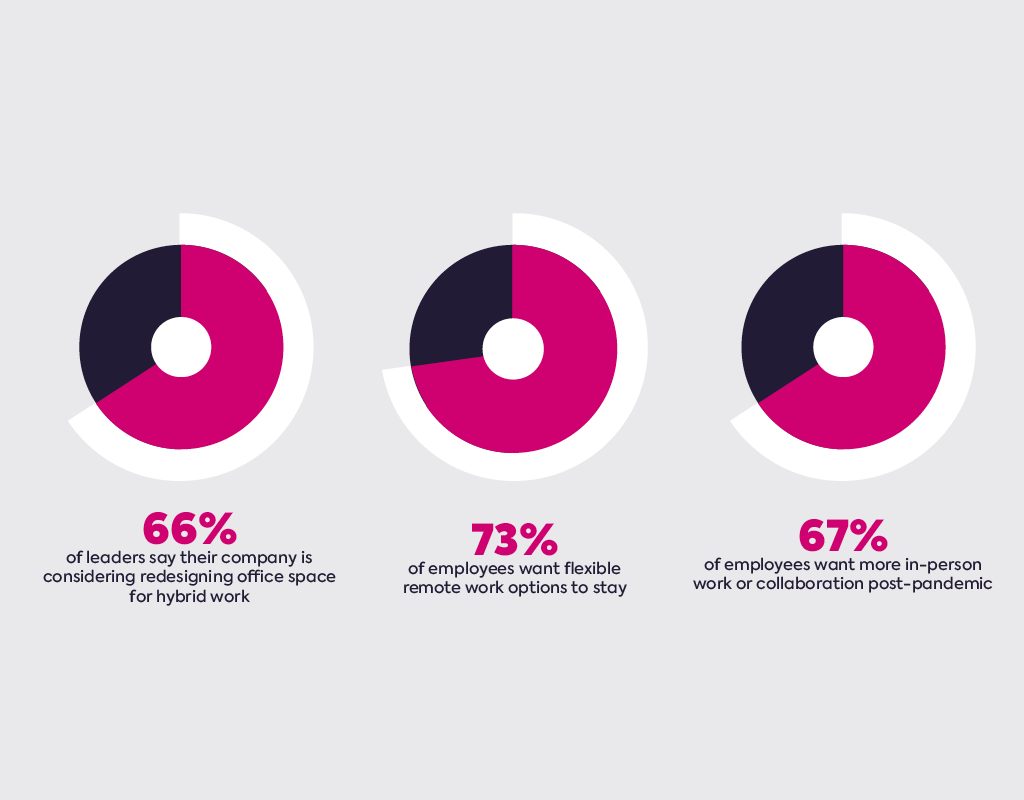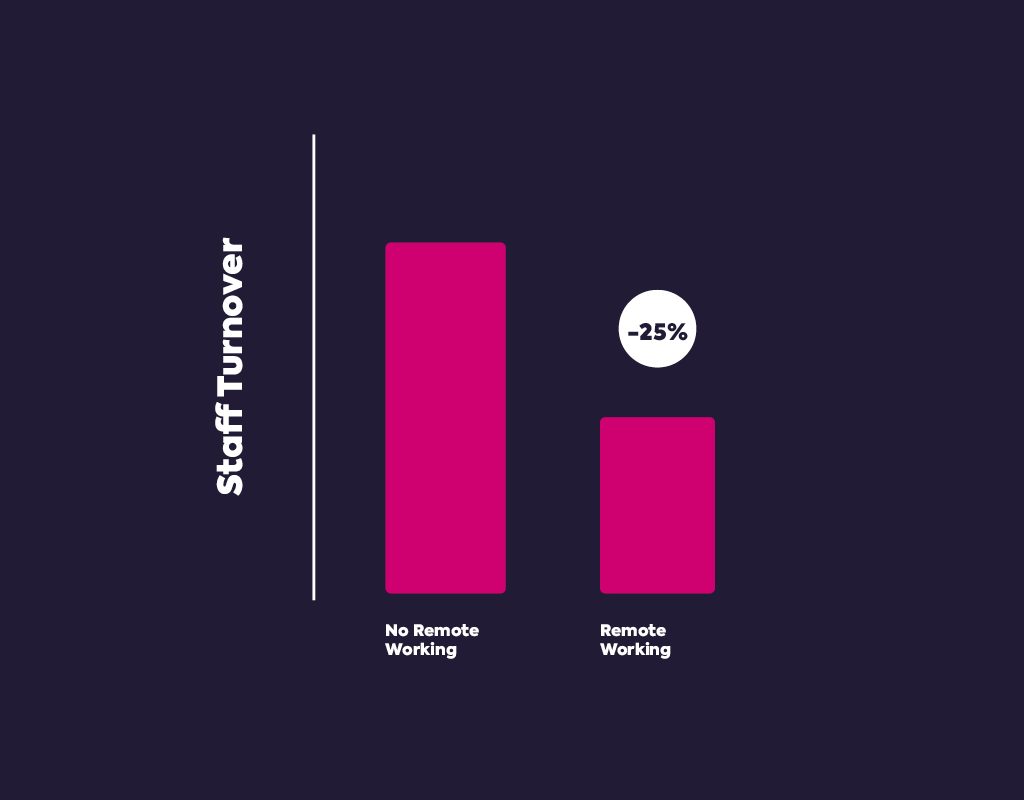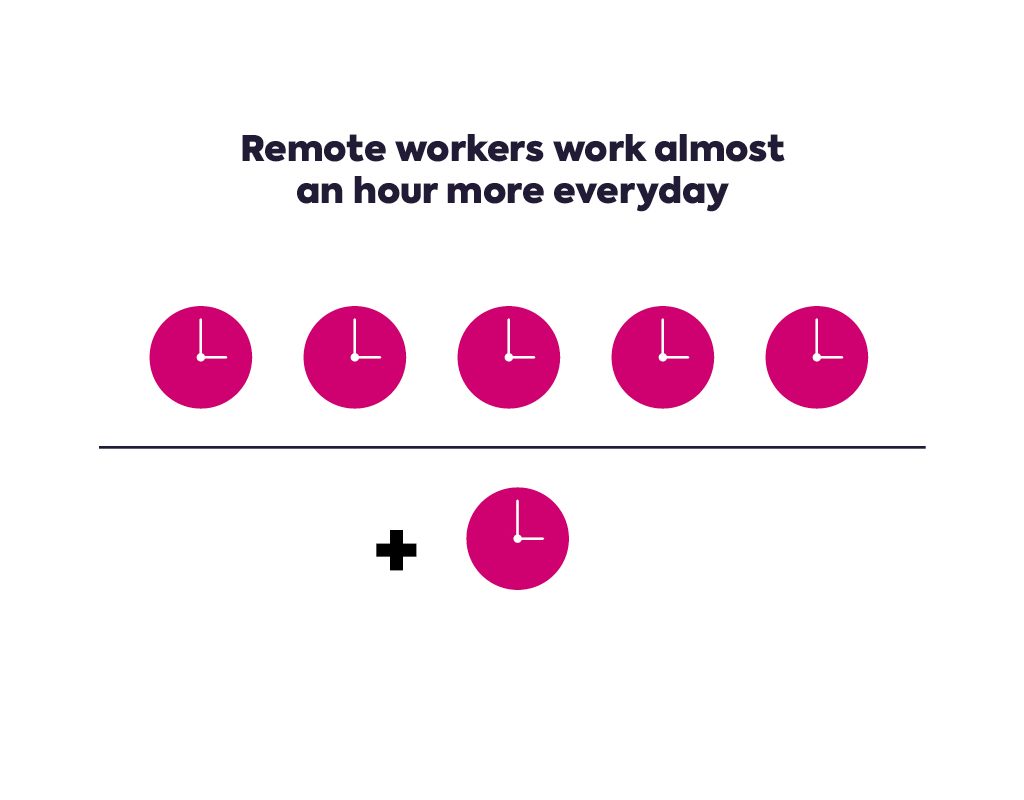- Home
- Our Solutions
Titus Services
Unlock Moodle's Potential with Titus
Migrate to Titus and transform how you use Moodle in your organisation. - Industries
- Our Work
- About
- Blog


Put simply, hybrid working is an employment model where employees split their time between remote working and working at the company premises. It’s a term that’s been around for a while, but has very much been brought into focus due to the COVID pandemic, as remote working became a necessity rather than an option.
We’ve pulled together some interesting stats on how adoption of flexible working in the UK and abroad has been received by employees, and the wider impact of the model on productivity, welfare and the environment.
The new world of flexible and remote working sounds like a dream, but isn’t without its challenges. Grab your copy of our free guide to deciphering what hybrid working really means for your organisation.

01 The pandemic has accelerated adoption
As we mentioned above, by far the greatest driver of flexible working models has been the global pandemic. A Bank of England report showed that almost half of UK workers (49%) worked from home for at least one day a week in February this year, compared to a figure of only 14% in February 2020.
Similarly, Gartner reports that the vast majority of businesses (88%) have either encouraged or required their employees to work from home over the past year.

02 Hybrid working is popular with employees
72% of remote workers prefer a hybrid office-home work model. And who can blame them? The 4,700 knowledge workers surveyed particularly enjoyed: Not commuting, Saving money, Better work/life balance and Less stress
- SlackHQ Tweet
For many employees, working from home during the pandemic was their first experience of remote working, and while the majority want this to continue to some extent, (73% according to a recent Microsoft study) over two thirds (67%) also report that they are missing in-person contact with colleagues and team members.
Research from the CIPD indicates that the proportion of organisations offering some degree of home working – in most cases as part of a hybrid model, is set to rise to roughly two-thirds, as compared to only a third prior to 2020.

03 Hybrid working reduces staff turnover

Dear tech companies, Employees don't need ping pong tables or beer fridges at work. Employees need flexibility to do their best work and enjoy life. For instance, working remotely. Please offer trust, not toys.
– Rodolphe Dutel, Founder of Remotive Tweet
Flexibility appears to be the key driver for employees, with just over half of respondents to a recent Gallup poll indicating that they would leave their current position if it meant they could gain more flexibility. A third of people see flexibility as the biggest benefit of remote or hybrid work, a study by Buffer showed.
In the United States, a survey by Owl Labs revealed that those organisations which allow remote working to some extent enjoy a 25% lower staff turnover rate on average.
04 Hybrid work is likely to increase productivity

Multiple sources suggest that remote or hybrid work fuels greater productivity, with an Indeed survey reporting that just under 60% of employees rate themselves as more productive when working from home.
In the US, Bloomberg predicts an upswing in productivity of as much as 5% across the board as a result of more employees being offered the opportunity to work remotely, with educational services, management, financial and technical professions among the most suitable for a hybrid or remote model.
05 Employee welfare is an important consideration
“An organization’s ability to learn, and translate that learning into action rapidly, is the ultimate competitive advantage.”
– Jack Welch, former CEO, General Electric Tweet

However, it’s important for employers to monitor employee welfare, and ensure that any gains in productivity or flexibility do not have a negative impact on their health. Work-life balance is a particular area of concern, with a recent Harvard study suggesting that remote staff put in almost a full extra hour of work per day (48.5 minutes) when compared to their office-based counterparts.
06 A reduction in wasted time
On a positive note, 26% of people said they enjoyed the flexibility of working remotely some of the time, and just over a fifth valued the lack of a commute. Global Workplace Analytics found that even part-time remote working could save individuals the equivalent of 11 working days by reducing the time they spend travelling to and from work.
07 Environmental benefits
Hybrid working has potential benefits beyond productivity and job satisfaction, with a reduction in commuter journeys helping to reduce employees’ individual carbon footprints. Data from Xerox showed a saving of over 90 million miles of driving when the company introduced flexible working for its employees, equating to a reduction of 41 tonnes of carbon emissions.
Overall, hybrid working brings with it a number of tangible benefits, but as with any large-scale change, it’s important to balance these against potential negative effects and ensure that employees feel supported and listened to during the transition.
In our next article, we’re going to move beyond the headline stats and examine how hybrid working affects the day-to-day life of employees in a range of different roles – using our own organisation as a case study.
In the meantime, if you’re looking for advice on how online learning can help manage and support employees as you move towards a hybrid learning model, get in touch with one of our team.
The new world of flexible and remote working sounds like a dream, but isn’t without its challenges. Grab your copy of our free guide to deciphering what hybrid working really means for your organisation.


Privacy Policy | Cookie Policy | Data Protection Policy | Equality, Diversity and Inclusion Policy
© 2023 Titus Learning LTD | Company Number 08799881 | VAT Number 1813 09027
Super talented, unflappable and very funny, Phuong supports the whole marketing team in her role as Digital Marketing Executive. Phuong holds a bachelor’s degree in Business Administration and recently completed a master’s degree in Management and Marketing. Originally from Hanoi in Vietnam, Phuong is now based in the UK and climatising brilliantly to our weather and food.
Phuong owns a food review Instagram page as travelling and food are her passion. She also has a cute little french bulldog.
Ellie was the first woman to join Titus and has paved the way for many more since then. After studying for a degree in Fashion and Marketing, Ellie was lucky to find herself at fashion weeks and photoshoots.
Now she’s switched from talk of the front row to front end design and has brought loads of transferable knowledge to Titus. Ellie has also found a real passion for tech, especially in the learning sector, helping clients create positive change for their organisations.
As one of the youngest people at Titus but at the same time one of the oldest serving members of the team, Callum has graced Titus with his broad smile and positive attitude for over 5 years now. As a key member of the marketing team, Callum works across all areas, both on and offline, to ensure that all Titus brands and communication are on point.
After missing out on the opportunity to go to University the first time around, management encouraged him to enrol in our course alongside his work. He is now studying to achieve his Level 6 Diploma in Professional Digital Marketing.
Always bringing innovation and new ideas, Dec studied a degree in Journalism but found his passion in digital marketing. Dec has also worked in marketing for one of the countries biggest retailers and within the property sector.
Outside work, Dec Co-founded a news publication where he collaborated with global brands like Uber, Amazon, BooHoo and countless SMEs.